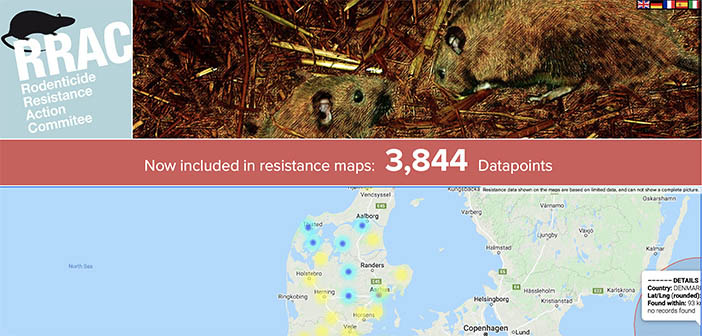An Android app has been launched by the Rodenticide Resistance Action Committee (RRAC) to allow pest control operators to identify whether they are in an area of rodenticide resistance at the touch of a button.
The platform provides industry experts, manufacturers and pest control operators with an understanding of the nature of anticoagulant resistance, introduces data on known resistant strains and provides help to those wishing to recognise and manage resistance.
Pest control operators can also contribute to the worldwide study by sending tail samples off for genetic analysis, where the results will then be input onto the RRAC platform to continue building the picture of rodenticide resistance, both in the UK and globally.
As well as tracking rodenticide resistance, the RRAC app also features a hub offering news, event information, literature and papers to help keep pest controllers informed on the latest developments in the industry.
The RRAC, which is a working group within the framework of CropLife International, consists of a host of participating companies including BASF, Bayer AG, Rentokil, Sygenta, Lipha Tech S. A, PelGar, Activa and Zapi, who have joined forces to help research, raise awareness and tackle rodenticide resistance.
The website currently contains information from over 3,850 data points around the world, with the launch of the app now making this vital data available to users anywhere, at any time.
Sharon Hughes, global technical marketing manager for rodenticides at BASF, said: “The launch of the RRAC Android app is an exciting step forward in the future of pest control, allowing us to readily access important data on distribution of rodenticide resistance in Norway rats and House mice.
“By completing a simple interactive checklist it also provides a fantastic tool for pest controllers on the go to find out if the area they are operating in has a high, medium or low resistance risk level. Recommendations are then made on which anticoagulants to use in areas of known resistance and also they should consider switching to a non-anticoagulant bait to effectively control infestations.
“What’s more, by inviting pest controllers who are not sure if they are in an area of rodenticide resistance to send off tail samples for analysis, the platform helps to paint a fuller picture of rodenticide resistance, ultimately allowing us as an industry to help combat the resistance issue.”


